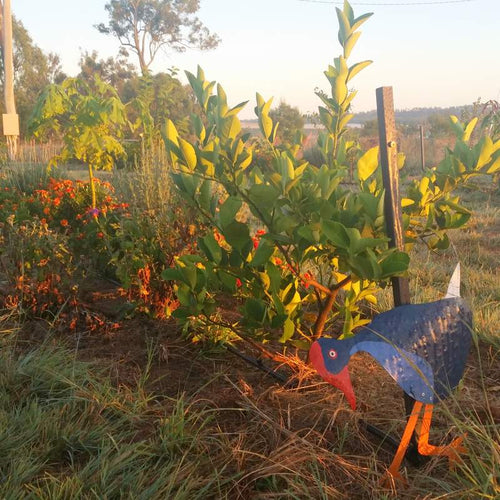How I use herbs - purslane
You might know purslane (Portulaca oleracea) as a weed, its also known as verdolaga, pigweed, little hogweed, red root, pursley, and moss rose. It is an annual succulent, native to India and Persia, that spreads and produces tiny yellow flowers. It can have green or red stems. It seems to be prevalent in most temperate climates and has been used since ancient times as both a medicine and a food.
How to grow purslane?
You may gather wild purslane, or you may want to cultivate it in your garden (and have some control over your supply). It starts easily from seed, and is one of those wonderful plants that produces copious seeds, so you will always have some in your garden. Apparently it tolerates poor compacted soils, and drought (I have seen it growing in a gravel on our farm tracks), so I guess this combined with the amount of seeds, explains why it is considered a weed.
Even better, purslane can benefit other plants in your garden. Purslane provides ground cover, which assists with retaining soil moisture. Its deep roots bring up moisture and nutrients that other plants can use, and some will follow purslane roots down through harder soil that they cannot penetrate alone.
How to eat purslane? (and why you should consider eating a weed)
Purslane is not a herb that you will see in the vegetable section of your supermarket, or mentioned in many recipes (here's some!), but there are good reasons to seek out this weed. The main reason is that Purslane contains more omega-3 fatty acids than any other leafy vegetable plant. We need a source of omega-3 to balance all the omega-6 that we eat in processed foods and grain-fed meat (see my review of Toxic Oil for more details). Like all leafy greens, it also contains beneficial vitamins and minerals.
Now are you glad that is grows like a weed so you can include it in every meal? Purslane has a bland taste, like a slightly sour lettuce. When chopped up in a salad or added with other herbs to a hot meal, it does not affect the taste. This is one herb that I don’t use as a tea, as the main benefit is from consuming the herb.
This would also be a good one to feed to stock (I don’t quite grow enough yet to spare some for the chickens, but I heard that they like it).
I am happy to allow this weed to grow in my garden, not only is it a nutritious addition to any meal, it grows with barely any attention from me, perfect for a permaculture garden.
Do you grow and eat purslane intentionally?
How to grow purslane?
You may gather wild purslane, or you may want to cultivate it in your garden (and have some control over your supply). It starts easily from seed, and is one of those wonderful plants that produces copious seeds, so you will always have some in your garden. Apparently it tolerates poor compacted soils, and drought (I have seen it growing in a gravel on our farm tracks), so I guess this combined with the amount of seeds, explains why it is considered a weed.
Even better, purslane can benefit other plants in your garden. Purslane provides ground cover, which assists with retaining soil moisture. Its deep roots bring up moisture and nutrients that other plants can use, and some will follow purslane roots down through harder soil that they cannot penetrate alone.
| purslane seeds |
How to eat purslane? (and why you should consider eating a weed)
Purslane is not a herb that you will see in the vegetable section of your supermarket, or mentioned in many recipes (here's some!), but there are good reasons to seek out this weed. The main reason is that Purslane contains more omega-3 fatty acids than any other leafy vegetable plant. We need a source of omega-3 to balance all the omega-6 that we eat in processed foods and grain-fed meat (see my review of Toxic Oil for more details). Like all leafy greens, it also contains beneficial vitamins and minerals.
Now are you glad that is grows like a weed so you can include it in every meal? Purslane has a bland taste, like a slightly sour lettuce. When chopped up in a salad or added with other herbs to a hot meal, it does not affect the taste. This is one herb that I don’t use as a tea, as the main benefit is from consuming the herb.
This would also be a good one to feed to stock (I don’t quite grow enough yet to spare some for the chickens, but I heard that they like it).
I am happy to allow this weed to grow in my garden, not only is it a nutritious addition to any meal, it grows with barely any attention from me, perfect for a permaculture garden.
Do you grow and eat purslane intentionally?























Leave a comment